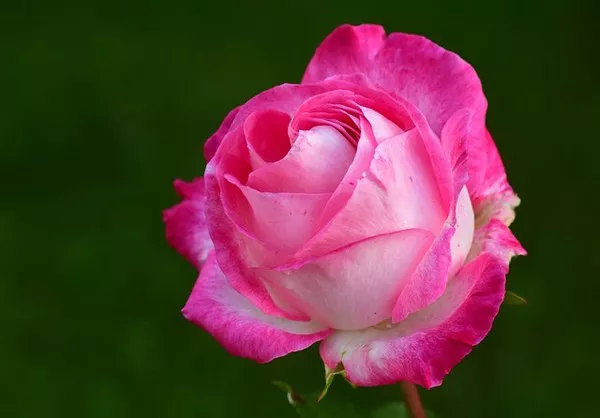As Valentine’s Day approaches, the timeless tradition of expressing love through the gift of roses continues to captivate hearts around the world. While the sentiment behind this gesture is well-known, the origins of Valentine’s roses might be less familiar. Delving into the rich history of this cherished tradition reveals a fascinating journey that spans centuries and continents.
Ancient Symbolism of Roses
The association between roses and love can be traced back to ancient times. In Greek and Roman mythology, roses were linked to the goddesses of love, Aphrodite and Venus, respectively. The captivating beauty and enchanting fragrance of the rose made it a natural symbol for expressing deep emotions.
The Roman poet Virgil is credited with coining the phrase “sub rosa” (under the rose), signifying secrecy and confidentiality. This metaphorical use of the rose as a symbol of discretion laid the foundation for the flower’s later association with romantic endeavors.
Persian Influence on Rose Cultivation
The cultivation of roses began to flourish in Persia (modern-day Iran) around the 14th century. Persian scholars and poets extolled the virtues of the rose in their literary works, elevating its status to that of a symbol of love and beauty. Persian traders then spread the cultivation of roses to other parts of the world, contributing to the flower’s popularity.
European Renaissance and the Language of Flowers
During the European Renaissance in the 18th century, the practice of assigning meanings to flowers, known as “floriography” or the language of flowers, gained prominence. Roses, in particular, became vehicles for expressing sentiments that words could not convey openly due to societal norms.
As the language of flowers became more refined, different colors and varieties of roses conveyed distinct messages. Red roses emerged as the unequivocal symbol of passionate love and deep affection, setting the stage for their association with Valentine’s Day.
The Victorian Era: Rise of Floral Symbolism
The Victorian era marked a pinnacle in the popularity of floral symbolism, with roses at the forefront of this trend. The gift of roses became a subtle and eloquent way to communicate emotions, as individuals carefully selected specific colors and arrangements to express their feelings.
Queen Victoria herself played a significant role in popularizing the rose as a symbol of love. The Queen was an avid enthusiast of flowers, and her wedding bouquet, which prominently featured roses, solidified the flower’s connection to romance in the public consciousness.
The Influence of the Red Rose on Valentine’s Day
The association between red roses and romantic love became firmly established in the 19th century, setting the stage for the modern tradition of gifting roses on Valentine’s Day. The deep red hue of the rose symbolizes passion, desire, and enduring love, making it the perfect embodiment of the intense emotions associated with romantic relationships.
Ecuador: The Rose Capital of the World
While roses have historical roots in various regions, one country has emerged as a global leader in rose cultivation – Ecuador. Known for its diverse climate and fertile soil, Ecuador provides an ideal environment for cultivating high-quality roses.
The vast majority of roses sold globally for Valentine’s Day are sourced from Ecuador, where the rose industry has become a cornerstone of the country’s economy. The combination of optimal growing conditions and advanced cultivation techniques has positioned Ecuador as the rose capital of the world.
Ecuadorian roses are renowned for their large blooms, vibrant colors, and long stems, making them highly sought after for romantic gestures. The country’s commitment to sustainable and eco-friendly practices in rose cultivation has also contributed to its prominence in the global flower market.
Modern Challenges and Future Trends
While the tradition of giving roses on Valentine’s Day remains strong, the industry faces modern challenges. Issues such as environmental sustainability, fair labor practices, and transportation logistics have come to the forefront of discussions within the global rose market.
Consumers are increasingly conscious of the environmental impact of their purchases, leading to a growing demand for sustainably sourced and eco-friendly roses. As the industry evolves, rose producers are adapting their practices to meet these changing consumer preferences, ensuring the longevity of this time-honored tradition.
See also What Flowers Like Full Shade? All You Need to Know
Conclusion
The tradition of gifting roses on Valentine’s Day has a rich and intricate history that spans cultures and centuries. From ancient symbolism to the Victorian language of flowers and the modern association with Ecuador as the rose capital of the world, the journey of Valentine’s roses is a testament to the enduring power of love and the timeless appeal of this romantic gesture.
As we exchange roses on Valentine’s Day, let us not only celebrate the beauty of the flower but also appreciate the cultural tapestry and historical significance woven into each petal. The red rose, with its profound symbolism, continues to be a symbol of love that transcends time and borders, connecting us to the romantic traditions of the past while embracing the evolving values of the present.


